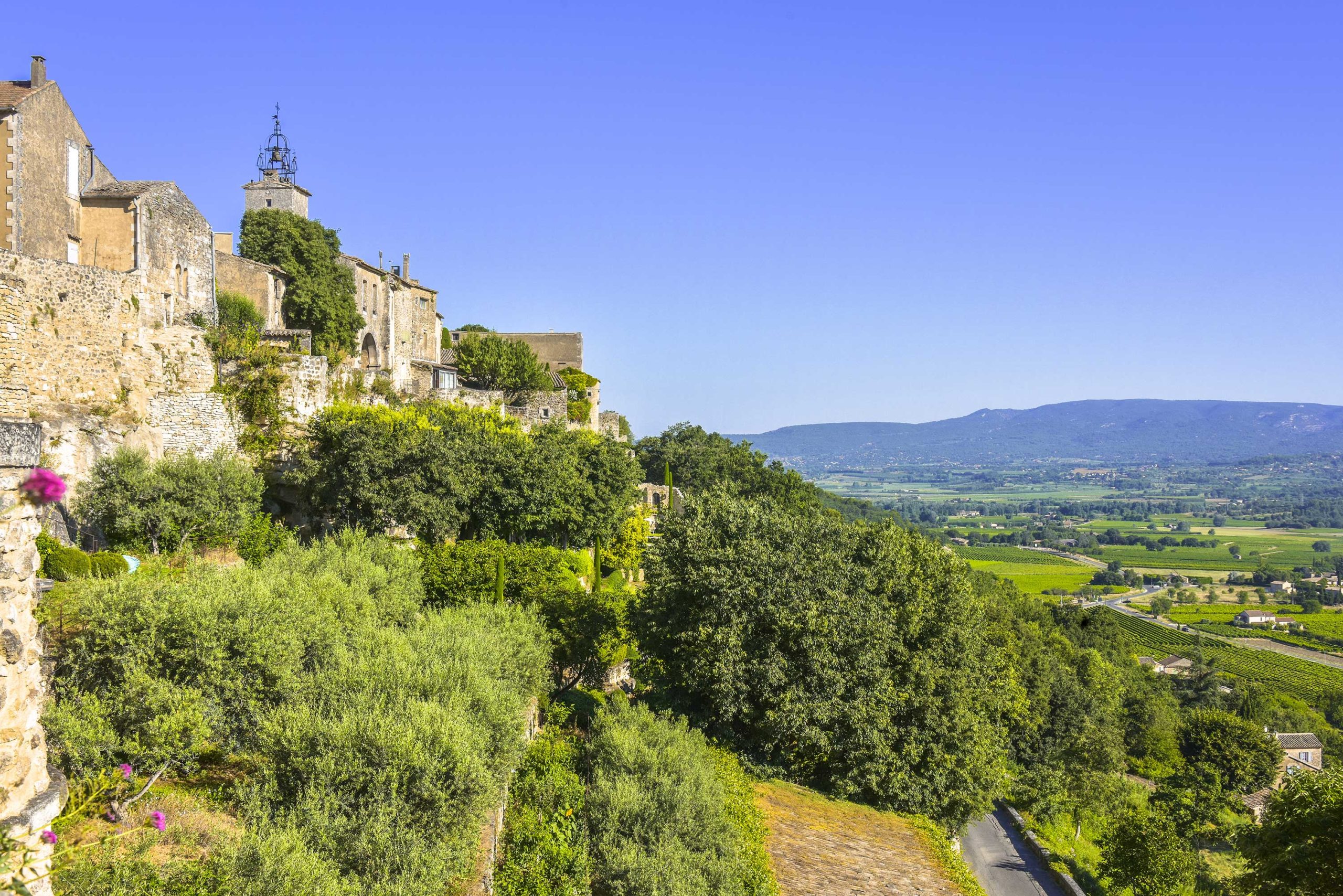AOC LUBERON - Red, rosé, white

The wine-growing area : The Luberon’s vineyards are nestled in the greenery of the Regional Park of the Luberon, which stretches over 36 communes in south-eastern Vaucluse.
Soil: the Luberon resulted from a strip of emerged land that during the secondary formed an isthmus between the Vocongian rift (Alpine sea) and the Mediterranean. Three geological units can be distinguished:
– the Apt Basin, a synclinal zone alternating limestone and marl beds
– the limestone Luberon, where erosion has revealed limestone/marl features
– the Pays d’Aigues formed mainly of Miocene sands with a mollasse in the Cucuron area. The limestone beds reappear in the western part of southern Luberon.
Climate: Mediterranean, with influences from the more continental climate of the Alps and the Rhône Valley. With some 2600 hours of sunshine a year, the Luberon is one of the sunniest areas of France. One of the special features of the Luberon land is the temperature spread between night and day, which gives the vines a rest and provides for the freshness and elegance of its wines.
History : Wine-growing in the Luberon dates back to Antiquity. In the Middle Ages and the Renaissance, many vineyards grew up, particularly to the North of the Petit Luberon. The industry expanded in the late C19th and between the wars. After the 1970s, the vintners, aware of the need to modernize, undertook large scale modernization work, efforts that were crowned with success when in 1988 the Côtes du Luberon were given the Appellation d’Origine Contrôlée AOC quality and origin label.
Average annual production : approx. 150,000 hl
Basic yield : 55 hl for the red and rosé, 60 hl for the white (average yield: approx. 43 hl /ha)
Share (2009) : 44 % rosé, 32% red, 24% white
Grape varieties :
- red and rosé : Syrah, Grenache noir, Mourvèdre, Carignan and Cinsault plus some white (10% maximum for reds and 20% for the rosés).
- white : Grenache blanc, Clairette blanche, Vermentino, Bourboulenc, Roussanne, Marsanne , Ugni blanc, Viognier
minimum alcohol content:
- rosés and whites : 11.5%
- reds : 12%
L’AOC Luberon red is round on the palate, fruity and compelling, with little notes of ripe red fruit (blackcurrant, blackberry, raspberry…). Another more complex style of red flirts with spicy notes (pepper) but retains the freshness and elegance that are the AOC’s distinctive features.
L’AOC Luberon rosé, ranging from pale to bright pink in colour, is distinguished by marked red fruit (strawberry, redcurrant) or more exotic aromas and by its freshness.
L’AOC Luberon white is characterized by its liveliness and elegance, with a wide range of aromas, including grapefruit and peach for the fruity flavors, and honey and toasted bread for the more complex ones.
L’AOC Luberon white goes well as a appetizer, as also with fish, seafood and goat’s cheese…, The vat-matured white is better with white meats in sauces, runny cheeses and mouldy-rind cheeses, Comté and so on.
L’AOC Luberon rosé is another great ‘apéritif’, but also goes well with cold deli meats, salmon, Mediterranean vegetables, Provençal stuffed vegetables, soft runny, hard and mouldy goats’s and sheep’s cheeses, and red fruit deserts.
L’AOC Luberon red : This wine’s fruity and engaging style is a winner to wash down cold deli meats, grilled or roasted red meats and poultry, white and pink meats, barbecues, fish matelotes (stew), smear-ripened cheese…
The wine’s more complex variety will be good company for red meats that are roasted or in a sauce (lamb, beef, duck), poultry served in a sauce (‘coq au vin’), game, soft or fermented cheeses ….
Storage : AOC Luberon wines are drunk in the year for the rosés and whites, and can be drunk in the year or wait 3-7 years for different types of red.





